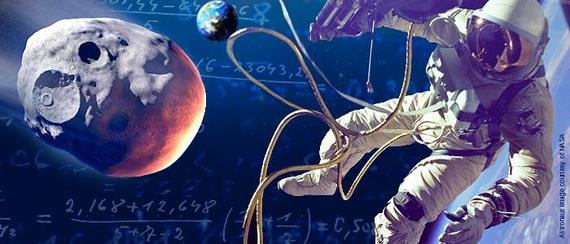This post was originally published on Cisco's Technology News Site.
In the tech startup world, the ABC's (Always Be Closing) are ubiquitous. In the open-source, collaborative world, the triple-Ds (Design, Development, Data) are about to be at the tip of everyone's tongue, at least in building prototypes for national agencies. Case in point: TopCoder a community of developers and scientists is harnessing the triple D's to help NASA build solutions for everything from creating tools to aid space missions to hunting for and tracking asteroids. Since 2001, TopCoder has been facilitating competitions that position science problems as challenges for people who work outside the field of science to address. For NASA, its collaboration with TopCoder is helping the agency make space a global initiative and encouraging more people to become citizen explorers.
Narinder Singh, President of TopCoder, says his group initially joined forces with NASA to simplify the process of making medical kits. "It's such a unifying thing," shares Singh. "Making medical kits would normally take three hours to do. We ran it through the TopCoder community, and we reduced the time down to 30 seconds, and that really peaked the curiosity of what's possible."
Thanks to the advent of data science, people and crowds and communities can participate in creating huge advances in areas that used to only be accessible to specialists or scientists. In June 2013, NASA announced the Asteroid Grand Challenge, a call to action seeking new ideas to speed up the work NASA has already been doing to defend the planet from threats. This years, NASA and TopCoder held the Asteroid Data Hunter Challenge, which exemplifies the benefits of rallying citizen scientists to take on a single task. In this competition, TopCoder asked competitors to develop an improved algorithm to spot asteroids in images. In addition to this contest, the Asteroid Tracker challenge tasked participants with helping NASA find new ways to detect NEOs (Near-Earth Objects).
These projects and other competitions TopCoder has done with different organizations are all open source, a development model that Singh says brings together the triple-D cycle and is also the best way to create scale.
"Designs are constantly refined to inspire us to use things, development puts it in the hands of users, and data helps create better design and development," shares Singh.
Following NASA's foray into the open source way, the Environmental Protection Agency (EPA) and USAID have also tapped TopCoder to organize competitions on their behalf. Put in motion to protect people from toxicity, the EPA challenge received more than 800 submissions. Launched in October 2012, USAID's Tech Challenge for Atrocity Prevention was initiated to find people who could create algorithms to predict atrocities in places with no history of mass violence. Sociological and regional data, design, and development made it all possible.
What does this mean for business?
"The world is benefitting from the output of open source in a revolutionary way because most companies can't scale without working with this model," says Singh. "By working in an open source capacity, you're not stuck saying, 'I need a biologist or I need a chemist or an astrophysicist. You're suddenly taking on domains across multiple disciplines and turning them into an area that a much bigger population can work on.'"

